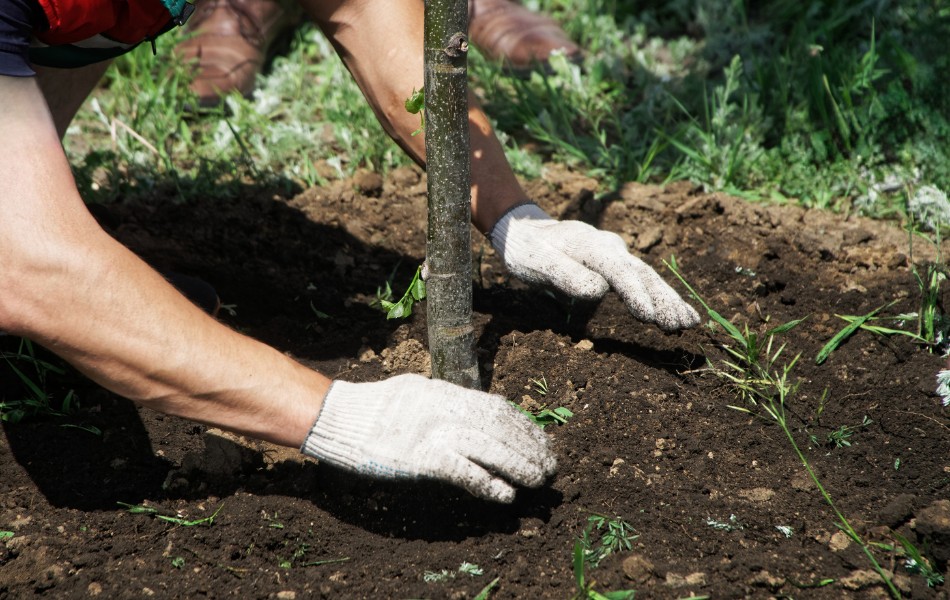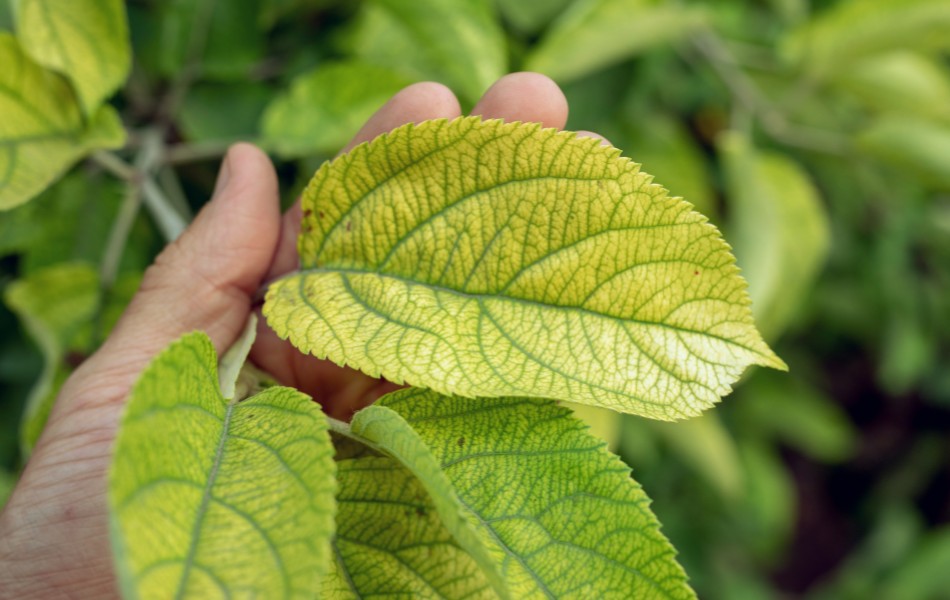Don’t Let Summer Kill Your Trees: Watering Tips for St. Louis Properties

Keep your trees healthy while it’s hot and dry with these summer watering tips. Learn when, how, and how much to water before stress turns into lasting damage.
After a hot, dry July in the St. Louis area, August is shaping up to be even tougher on trees. While we’re not officially in a drought yet, last year’s dry conditions have many locals noticing wilting leaves, early color changes, and dieback in the canopy. Without enough rainfall, that stress can quickly snowball into long-term damage or even tree loss.
If Mother Nature isn’t delivering enough rainfall, it’s up to homeowners to step in. Use these watering tips from local tree care experts to help your trees stay healthy through the toughest stretch of summer.
Key Takeaways
- During summer, mature trees need roughly 10 gallons of water per inch of trunk diameter each week, but young trees are more vulnerable and often require watering every few days.
- You can test if your trees need water by digging a small hole or inserting a screwdriver into the soil; if it comes out dry, your trees likely need supplemental watering.
- Water is essential for photosynthesis and nutrient absorption, and without adequate moisture, trees become stressed and vulnerable to diseases, pests, and death.
- Use “low and slow” watering methods, like soaker hoses or underground irrigation rather than sprinklers to encourage deep root growth and proper hydration.
- Water trees early morning (6-10 AM) to minimize evaporation, and add 2-4 inches of organic mulch around trees to help retain soil moisture during hot summer months.
How Much Water Do Trees Need in Summer?
When summer heat sets in across St. Louis and St. Charles County, even well-established trees can struggle without enough water. As a general rule, trees need about 10 gallons of water per inch of trunk diameter every week. But this can vary depending on:
- Soil Type: Clay soil holds water longer, while sandy or silty soils drain quickly.
- Weather Conditions: High temperatures, wind, and low humidity all increase water needs.
- Tree Age & Species: Young or newly planted trees need more frequent watering than mature ones.
How to Tell If Your Tree Needs Water
If you aren’t sure if your tree needs hydration, there is a simple test that can give you an idea. Dig a small hole a few inches deep by your tree and feel the soil. If it is cool and moist, it likely does not need any additional water.
Alternatively, you can insert a screwdriver or other similar probe into the ground. If it is damp when you pull it out, your tree likely has sufficient moisture.
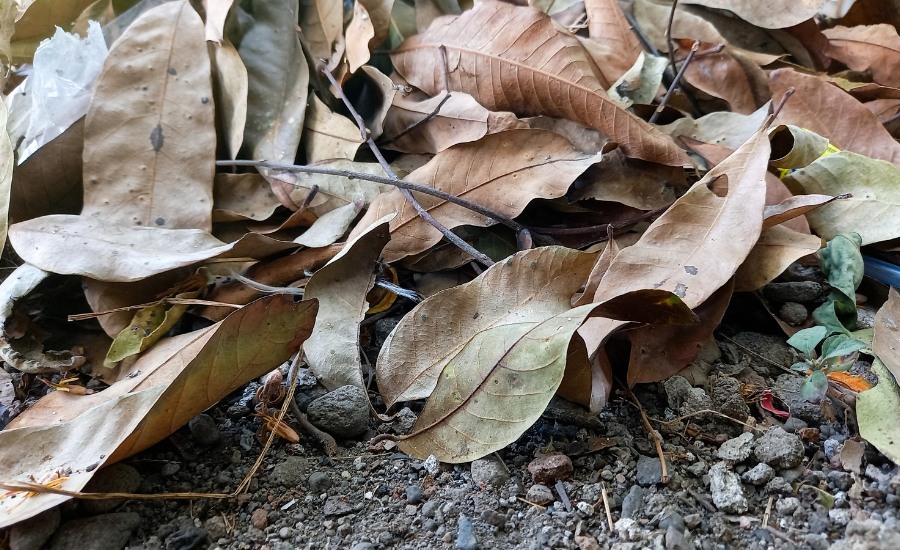
Dry and fallen leaves are a common sign of drought stress in Missouri.
Why Trees Need Supplemental Water During Hot Weather
Of course trees need water to survive. But why is that? Water is critical for all plants! When trees are well-hydrated, they’re able to carry out photosynthesis (the process of turning sunlight into food), absorb and transport essential nutrients like nitrogen, potassium, and phosphorus, and regulate internal systems like cell structure and leaf cooling.
But when the soil dries out, this entire system starts to break down.
You might assume that fertilizing your tree during summer will help it bounce back when you notice signs of decline. However, without adequate water, fertilizer can actually harm your tree. That’s because nutrients must first dissolve in water before they can be absorbed by the roots. In dry conditions, fertilizer salts may sit in the soil and burn the roots instead of feeding them.
Why Young Trees Need More Water
Mature trees have deeper, more established root systems that act like a natural reservoir, storing water from previous rains. This means they can typically endure short dry spells without too much stress.
Young trees, on the other hand, haven’t yet developed those deep root systems. Their roots stay closer to the surface, where soil dries out the fastest. As a result, young and newly planted trees are especially vulnerable during summer heat and need consistent supplemental watering to survive and establish themselves.
Signs Your Trees Need Supplemental Water
Some of the early symptoms of a lack of water in your tree include:
- Wilting leaves during the day that recover at night
- Yellowing or discolored leaves
- Browning around the margins of the leaves
- Early leaf drop
If the drought continues, symptoms will continue to develop and worsen. Some of the advanced damage to look for includes:
- Dead branches
- Cracking bark
- Dead roots
- Permanent wilting of leaves
PRO TIP : It is easy for homeowners to mistake the signs of a drought with common disease symptoms. For this reason, always have an arborist examine your trees to determine what is wrong.
How to Properly Water Trees During Summer in Eastern Missouri
You can’t control the rain, but you can control how well your trees weather a dry stretch. Providing slow, consistent supplemental water during the summer months helps minimize stress, especially when rainfall is limited. Even a few weeks of proper watering can make a noticeable difference in your tree’s health and resilience.
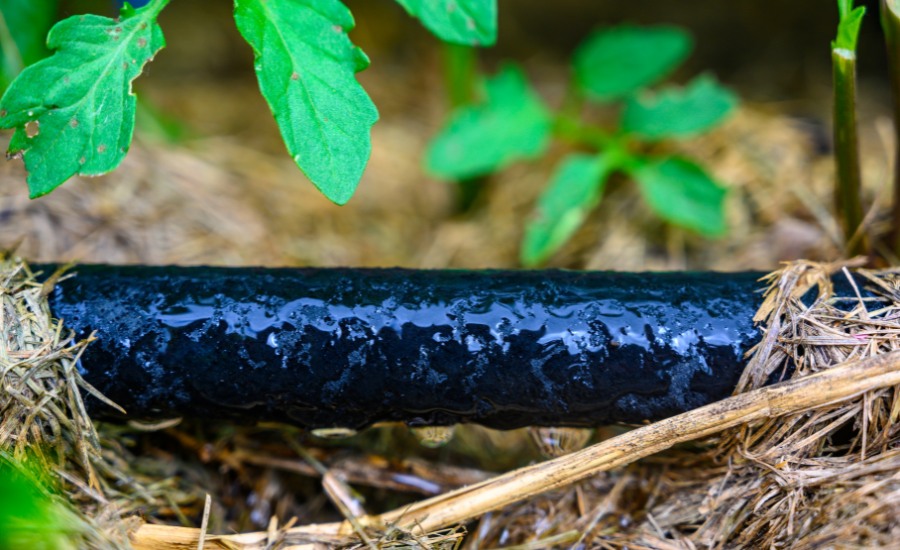
Techniques for Getting Water to Your Trees
When watering your trees, you want that water to reach deep into the ground where all the roots can access it. The general advice is to water low and slow. But why does it matter how you get the water to your tree?
A quick, shallow watering creates numerous problems for a tree. If the water is all in the upper reaches of the soil, it will encourage the roots to grow there. Shallow roots will be unable to access the water and nutrients deeper in the soil – something that is crucial for a healthy tree.
Shallow roots are also more likely to become exposed over time, and they won’t be able to anchor your tree to the ground.
Some of the methods for getting water to your trees include:
- Soaker Hose: A soaker hose slowly drips water, allowing it to soak the ground underneath. These hoses are easy to use, as you just set them up and allow them to water your tree slowly.
- Underground Irrigation: Installing an irrigation system takes some initial effort to set up, but it is the most efficient way to get water to the roots underground. These systems also allow you to control the amount of water that you use to avoid overwatering.
- Standard Hose: You can use a standard hose to water the ground, as long as you have it set to a slow trickle. You’ll need to move the hose around regularly to ensure you adequately hydrate the area under the tree’s drip line (the ground under the canopy).
When and How Often to Water Trees
Even if you’re using the right watering method, timing and frequency are just as important.
- Time of Day: Water early in the morning (between 5 AM and 9 AM). This minimizes evaporation and gives roots time to absorb moisture before the heat peaks. Avoid watering during the hottest part of the day – it can stress trees even more.
- How Often: Mature trees typically need deep watering every 10-14 days during dry periods. Young trees (under 3 years old) may need water every 3-5 days depending on soil type and weather conditions.
Frequently Asked Questions About Summer Tree Watering
Watering trees during a dry summer is a simple way to reduce their stress. However, many homeowners ignore it or don’t understand other ways to help their trees during the summer.
We’ve answered some of your common questions to help you better understand the importance of proper tree care during the summer.
What are common mistakes homeowners make when watering trees?
Some of the biggest watering mistakes include:
- Watering too shallowly
- Watering too close to the trunk
- Overwatering
- Inconsistent watering
- Skipping mulch
- Relying solely on rain
Can I water my tree with a sprinkler?
No, because sprinklers are designed for lawns, not trees. They often deliver water too quickly and too shallowly, leading to surface root growth and inefficient absorption. A soaker hose or drip irrigation system is far more effective at delivering water deep into the soil where your tree’s roots need it most.
Other than watering, how can I help trees deal with summer stress?
One of the simplest ways you can help protect your trees from the worst of heat and drought, besides providing supplemental water, is to add mulch. Mulch helps the soil retain moisture and can lower the temperature of the soil to reduce stress. Use an organic mulch and keep the layer between two and four inches.
What tree species often need more supplemental water in the summer?
Some Missouri species that are more sensitive to insufficient water include:
- Red maple
- River birch
- American sycamore
- American holly
- Canadian hemlock
- American hornbeam
Additionally, many fast-growing species are also susceptible to drought stress, as they require extra water to maintain their rapid growth.
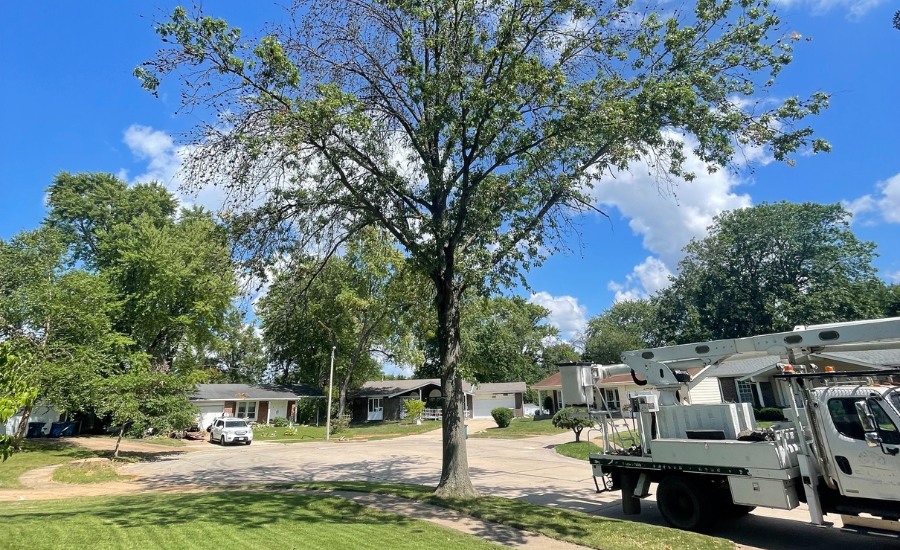
Worried About Your St. Louis and St. Charles County Trees This Summer? Call Mathias Today!
Last year, a homeowner called us after noticing signs of severe drought stress in her tree. With a customized watering plan and expert guidance, her tree not only recovered but is now thriving.
If you’re unsure what’s causing your tree to decline, don’t guess. The ISA Certified Arborists at Mathias Precision Tree Service are here to assess the situation, identify stress factors, and recommend the right course of action.
Give your trees the support they need to stay healthy this summer. Call us today at 314-322-7690 or request an estimate online.

